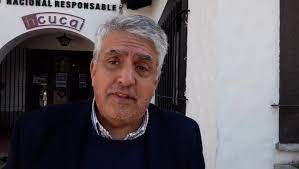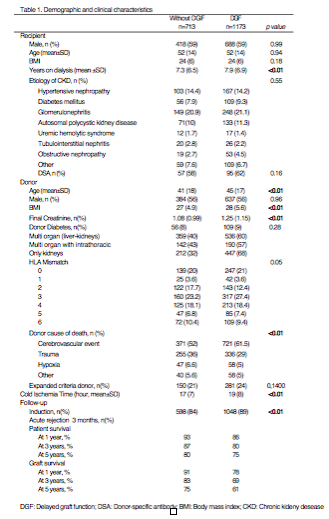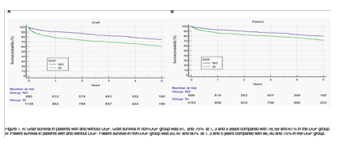
Incidence and effect on survival of delayed graft function in donor-deceased kidney transplants in Argentina: a multicenter analysis
Jihan Sleiman1, Maria C Giordani1, Ruben Schiavelli2, Johanna F Caldano1, Viviana Tagliafichi3, Daniela Hansen Krogh3, Liliana Bisigniano3.
1Kidney Commitee, SAT, Caba, Argentina; 2Procurement Commitee, SAT, Caba, Argentina; 3Technical and Scientific Direction, INCUCAI, Caba, Argentina
SAT - INCUCAI GROUP.
Introduction: Delayed graft function (DGF) is a manifestation of acute kidney injury with attributes unique to the transplant process. DGF is associated with negative outcomes such as higher incidence of acute rejection, worse graft function and lower grafts and patients´ survival. Although the worldwide incidence of DGF is variable, a previous study showed that the incidence in Argentina is higher than the US and most countries in Europe. Therefore, the aim of our study was to identify the risk factors associated with DGF in Argentina and to evaluate the impact of DGF on grafts´ and patients´ survival.
Methods: Retrospective multicenter cohort study of deceased-donor kidney transplant from 33 transplant centers in Argentina between 2015 and 2017. Demographic data and donor and recipient related variables were analyzed at baseline and at 3 and 5 years of follow-up. Data were obtained from SINTRA / INCUCAI, the Argentinian procurement organization and from the transplant centers.
Results: Between 2015 and 2017, 1886 single kidney transplants were performed in 33 centers. Recipient and donor characteristics are shown in Table 1. In the current study, the incidence of DGF was 62%. Univariate analysis demonstrated that higher donor creatinine, donor age, recipient time on dialysis, donor BMI, absence of induction and cold ischemia time were risk factors associated with DGF. Multiple organ donation and cause of death other than stroke were associated with reduced risk DGF. In the multivariable analysis donor age (0.02), higher donor creatinine (0.02), recipient time on dialysis (<0.01), cold ischemia time (<0.01), monorganic donor (<0.01)) were risk factors of DGF. Renal function was significatively better in patients without DGF throughout the 5 years follow -up (p<0.05). Patients with DGF had higher incidence of acute rejection in the first three months of follow-up, with T-cell mediated rejection being the most frequent. At 3 and 5 years of follow up there was no increased risk of rejection when both groups were compared. Graft survival and patient survival were lower in the group that developed DGF at 1, 3 and 5 years of follow-up (<0.01) (Figure 1).
Conclusion: We confirmed the high incidence of DGF in our country. Furthermore, the analysis on the risk factors associated with DGF were not as much as different as in other countries where the incidence of DGF were lower. Further studies should be done to unravel the cause of this high incidence of DGF in Argentina.


Heads of Transplant Centers: WalterJ, Raffaele P, Ciappa M, Paladini J, De la Fuente J, Novoa P, Soler Pujol G, Toselli L, Suso E, Ferreyra M, Fragale G, Reinoso S, Acosta F, Sgrosso J, Arriola M, Maldonado R, Acosta M, Prado R, Sedevich A, Martinez I, Di Pietrantonio S, Oddino J, Trimarchi H, Raimondi C, Gómez M, Dorado E, Palti G, Mele P, Maggiora E, Papaginovic Leiva M. Kidney Commitee: Ibañez J, Benitez ML, Leon L, Mesias M, Osella F.
